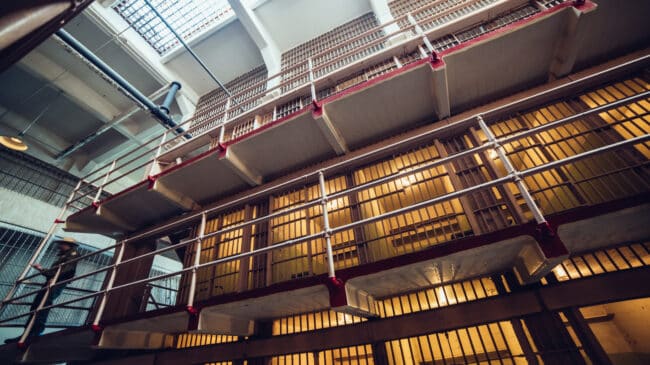Alabama’s prisons are some of the worst in the United States with conditions deemed “cruel and unusual” by the U.S. Department of Justice (DOJ). While there are many reasons for that designation, the physical conditions of the prisons themselves are a large part of the problem. Alabama desperatly needs new facilities that would replace older ones while also relieving overcrowding pressures.
The state keeps trying to get prisons built but has endured multiple setbacks over the past year. While criminal justice activists who believe there is no need to expand our prison footprint may applaud those setbacks, the decisions to back out of underwriting bonds for the new proposed facilities make improving conditions more difficult—for inmates, staff, and visitors.
A 2019 notice from the DOJ to the Alabama Department of Corrections (ADOC) provides over 50 pages of documentation of violence and neglect witnessed by DOJ staff that are not even “indicative of the number of violations that (they) found.” Through a combination of poor staffing levels, training, lack of funding (Alabama was dead last in 2015 in annual funding per inmate, at a little over $14,000), and old, dangerous poorly maintained prisons, conditions are “objectively unsafe” for inmates and staff. New facilities are a necessary part of the solution to these ills.
Unfortunately, the backlash from activists against the ADOC’s attempts to get new prison deals finalized have prevented getting even the easiest part of improving conditions started. While they may applaud their work’s effect on financial firms’ decisions, they don’t make improving conditions in Alabama’s prisons any easier. The state plans to close or repurpose 11 facilities as the new ones get completed, but with no path to getting the new ones built, the existing ones must continue to be relied upon. As financiers continue to back out of contracts with ADOC, solutions become even more elusive as the list of firms that could potentially underwrite the new debt dwindles.
On the other hand, anyone who endures reading the DOJ’s full notice would be rightly concerned about the state of ADOC’s staffing numbers and performance. Why would a financial firm want to back the building of a prison for an underpaid and understaffed workforce that has little-to-no control over its own facilities’ operations?
While it would be wonderful for Alabama to have a full, well-trained staff to operate its own prisons, it should not be prerequisite for improving the condition of prisons themselves. Unsurprisingly, educational and occupational training and therapeutic programming are lacking in Alabama’s prisons, but one of the proposed prisons is being designed specifically to facilitate treatment and care.
The improved conditions of new facilities should give ADOC staff some better incentive to improve themselves, too: Operating and maintaining a prison becomes more difficult when the mere physical state of the facilities “include defective locks; insufficient or ineffective cameras; a lack of mirrors; deteriorating electrical and plumbing system; as well as structural design issues and weaknesses with the buildings and their perimeters.”
Getting Alabama’s prisons to even minimally acceptable standards will be a tough and long journey. And the state is likly face continued roadblocks due to a reluctant financial sector, influenced by activists who see every new prison as bad (even if the new facilies would be mostly replacing existing capacity deemed unsuitable for human life).
While criminal justice advocates should continue to put pressure on the Alabama Department of Corrections and other agencies that leave inmates in violent and unsafe conditions, ending deals to build facilities with improved conditions helps no one involved, espechially inmates who must live with the lack of results every day.

